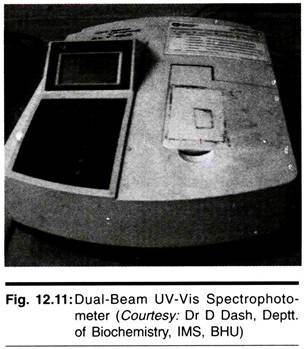The following points highlight the three main species of cockroach. The species are: 1. Periplaneta Australasiae 2. Blatta Orientalis 3. Blatella Germanica.
Cockroach: Species # 1. Periplaneta Australasiae:
Periplaneta australasiae (Fig. 73.40 B) is commonly known as Australian cockroach. It was originally a native of Africa but, like other cockroaches, it has now spread to the whole of the world. In India it is found mostly in south. It generally prefers to live in warm conditions and, therefore, it is a common pest of buildings.
P. australasiae is large in size and measures 30-35 mm in length. The body colour is reddish brown having two distinct and separate dark patches on the pronotum. The wings extend a little beyond the apex of the abdomen in both the sexes. The diagnostic feature of this cockroach is the pale basal margins of the tegmina.
Cockroach: Species # 2. Blatta Orientalis:
Blatta orientalis (Fig. 73.40 C and D) is commonly known as the Oriental cockroach or Black beetle. It was originally a native of North Africa, but nowadays it is found all over the world. It is generally found indoors and prefers the temperature between 20°-29°C and the cockroach, thus, occupies cooler places.
B. orientalis measures about 20-24 mm in length. The colour of the body varies, from reddish brown to black. In male, the fore and hind wings reach almost up to the posterior end of the abdomen, while in female the tegminae are very short and hind wings are absent. The colouration on pronotum is uniform. Both the sexes are devoid of power of flight.
Cockroach: Species # 3. Blatella Germanica:
Blatella germanica (Fig. 73.40 E and F) is commonly known as the German cockroach or Steamfly. It was originally a native of Africa but nowadays it is very common throughout the world. It prefers to live in warm and moist conditions and, hence, inhabits indoor placi such as kitchens, restaurants and dining halls.
B. germanica is small in size and measures from 10-15 mm in length. The colouration of body is pale ochraceous buff to tawny with two dark longitudinal bands on the pro-notum.
The male is thin and slender and its wings do not reach up to posterior end of the abdomen, while the female is stout and robust and its wings reach up to the posterior extremity of abdomen. The female carries the ootheca for about 10-15 days or more until the eggs hatch. B. germanica does not fly but can run swiftly by gliding flight.

